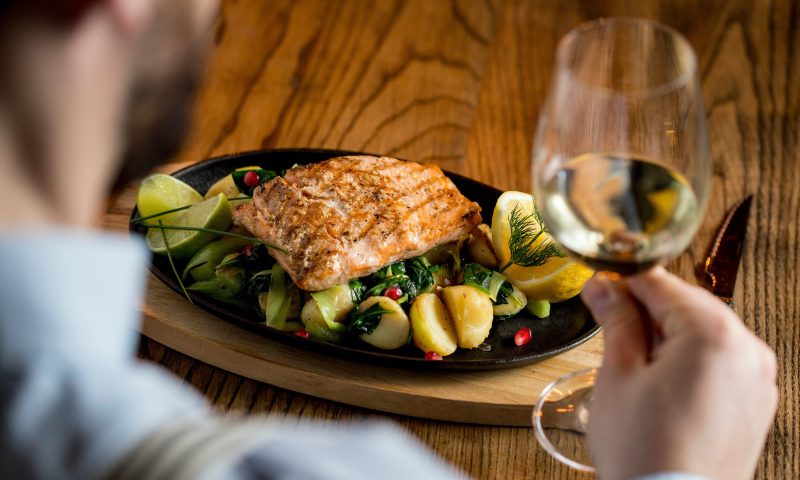
Cooking wines can be a contentious subject among chefs and home cooks. Everybody seems to have an opinion, and those opinions don’t often match. Fear not, as we’ve logged a lot of hours cooking with and sipping on quality white wine and have some reliable takeaways.
One mantra we can agree with is this: Never cook with a wine you wouldn’t otherwise drink. If it’s not really palatable, it could alter your dish in unsavory ways. About the only exception to this rule is with older red wine, which you can use like vinegar when making red sauces, stews, and that sort of thing. But when it comes to white wine, cook with what you like to sip.
But there’s a caveat. Since you’re going to be pouring a decent amount into your pasta or sauteed vegetables, that wine should not break the bank. Pouring grower Champagne into your pot may evoke a certain carefree coolness, but it’s also a serious waste of great wine (not to mention money).
So, we’ve set the bar at $25. This is a fair cutoff for white wine, wherein you can still find some lovely gems that are great for cooking with and drinking while you’re cooking.
Why dry white wine?

Dry white wine is about as nimble as liquid comes, offering complementary flavors and a nice streak of acid that can bring life to any number of dishes. Semi-sweet and sweet wines can help select dishes — think desserts and rich sauces — but largely, that residual sugar can get in the way, especially if you’re producing a savory meal.
A good dry white can also add much-needed tenderness and moisture, which proteins especially respond well to. This style is also ideal for deglazing or collecting all of those tasty bits on the bottom of a pan and repurposing them in your dish.
The best dry white wine for cooking

Crisp? Check. Lively acidity? Check. Nice and dry? Check. These are the qualities you look for in a good white wine when you’re hoping to cook with the stuff. Play around with varietal flavors to see what suits your palate. Best bets include sauvignon blanc, often grassy and tart, and any number of Italian whites made for the kitchen and your dinner table.
Keep in mind that these wines will last, too. Once open, they’ll keep for up to a week in the fridge, so long as you put the cap back on or re-cork it. And think about bringing the wine to temperature beforehand, depending on what you’re going to do with the stuff. We love a frigid white on a hot day but if the wine is too cold, it can lose a bit of its flavor and even tinker with the temperature and consistency of that sauce you’re making.
Here are the five best dry white wines for cooking.
Mary Taylor Clara Sala Sicilia Blanco

This zippy white from Sicily works well with so many different foods. The grape is Grillo, and while this white is usually used for blending, it’s a great stand-alone wine, especially when you have your apron on. And it comes from a part of Italy near Marsala, a place long known to understand the power of great cooking wines.
Acrobat Pinot Gris

There’s a reason why this bottle shows up on so many of our lists (many reasons, actually). Balanced, bright, and refreshing, it’s a great option for lifting pastas and poultry dishes and pairing with anything from grilled vegetables to shellfish. Try it with a little salt and butter for an excellent base for your favorite starches.
Mongrana Bianco

Made primarily of Vermentino, this Italian white shows tangy fruit notes with a kiss of honeysuckle. Use it as the base for a nice vinaigrette for your favorite summer salad or use it to douse your stir-fry or chicken picatta.
King Estate Sauvignon Blanc

This bracing white from the Willamette Valley offers all the hallmarks of the varietal. There’s a little Semillon introduced to round out the wine and the citrus and tangerine notes do exceptionally well when cooking Asian and spicy fare.
Balletto Chardonnay

Hailing from the cooler Russian River Valley in Northern California, this chardonnay is all about finesse. Forget the distracting oak and richness of the California chardonnays of old. This one is full of life and great when cooking with white fish, buttery pastas, and even Indian cuisine.
That dry white wine doesn’t necessarily have to show up in bottle form to be a good wine for cooking. Check out our feature on the best boxed wine for some ideas. And when you’re thinking about pairings, refer to our seafood and wine guide as well as our sauvignon blanc guide.


